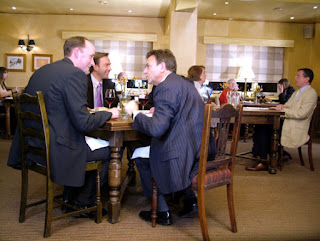This is part seven in a seven part series on finding the right locations.
When looking for a location put the word out, email friends, family, post on film forums. Use the internet, it’s an invaluable research tool. Keep your eyes open at all times. I find I do it instinctively and now have a mental catalogue of lots of interesting potential filming locations all over Brighton that are filed away should we ever need them.
Once you find it, here are some important things to keep in mind:
1. Where possible have all the necessary people with you, producer, director, DOP, production designer. Everyone will be looking for different attributes in a location. Incorporate a proper recce at the same time. Ultimately it saves time and making unnecessary trips back and forth and you can all immediately discount or agree on the potential of a location. Also bring the right equipment with you, either a camera or camcorder, a note book for those important notes, a tape measure and a light meter.
2. You also need to find the balance between the aesthetic and the practical. The place may look great but will there be enough room for all your equipment? Parking for your cast and crew? What facilities are available? Will it be too difficult to light? What are the sound conditions? What are the power sources and are you able to tap into it? Are there separate circuits capable of handling your lighting? You want to avoid having to use a generator, it’s costly and a nightmare for sound.
3. On exterior shoots make sure there are facilities available for your cast and crew. We shot in Alfriston on two freezing cold days in November so had to organise somewhere to do wardrobe changes, use a toilet if necessary and stay warm when not shooting. Fortunately The Smugglers Inn was kind enough to allow us to use their premises.
4. You must also take into account the distance between locations. Obviously when scheduling your shoot you will always aim to shoot in one location a day but there may be some days where it is unavoidable and you have to move from one to another. This time spent packing up and moving long distances from A to B to set up again, is valuable time lost when you could be shooting your film.
5. Finally when filming it goes without saying that Public Liability Insurance is essential and when securing locations this is a must. It is also an added reassurance to the proprietor that should anything go wrong he or she won’t be left out of pocket or liable for damages. When negotiating a location another good bargaining tool in your arsenal is offering a credit in your film and publicity for their business when and where possible.
Once you find it, here are some important things to keep in mind:
1. Where possible have all the necessary people with you, producer, director, DOP, production designer. Everyone will be looking for different attributes in a location. Incorporate a proper recce at the same time. Ultimately it saves time and making unnecessary trips back and forth and you can all immediately discount or agree on the potential of a location. Also bring the right equipment with you, either a camera or camcorder, a note book for those important notes, a tape measure and a light meter.
2. You also need to find the balance between the aesthetic and the practical. The place may look great but will there be enough room for all your equipment? Parking for your cast and crew? What facilities are available? Will it be too difficult to light? What are the sound conditions? What are the power sources and are you able to tap into it? Are there separate circuits capable of handling your lighting? You want to avoid having to use a generator, it’s costly and a nightmare for sound.
3. On exterior shoots make sure there are facilities available for your cast and crew. We shot in Alfriston on two freezing cold days in November so had to organise somewhere to do wardrobe changes, use a toilet if necessary and stay warm when not shooting. Fortunately The Smugglers Inn was kind enough to allow us to use their premises.
4. You must also take into account the distance between locations. Obviously when scheduling your shoot you will always aim to shoot in one location a day but there may be some days where it is unavoidable and you have to move from one to another. This time spent packing up and moving long distances from A to B to set up again, is valuable time lost when you could be shooting your film.
5. Finally when filming it goes without saying that Public Liability Insurance is essential and when securing locations this is a must. It is also an added reassurance to the proprietor that should anything go wrong he or she won’t be left out of pocket or liable for damages. When negotiating a location another good bargaining tool in your arsenal is offering a credit in your film and publicity for their business when and where possible.
















